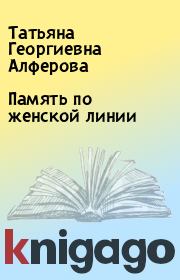Михаил Николаевич Дудин , Олег Федорович Шахов , Маргарита Сергеевна Шахова , Екатерина Петровна Русакова , Юлия Сергеевна Сизова - Digital Technologies as a Driver of Intellectual Stratification of Human Resources: Socio-Economic Inequality
 | Название: | Digital Technologies as a Driver of Intellectual Stratification of Human Resources: Socio-Economic Inequality |
Автор: | Михаил Николаевич Дудин , Олег Федорович Шахов , Маргарита Сергеевна Шахова , Екатерина Петровна Русакова , Юлия Сергеевна Сизова | |
Жанр: | Экономика | |
Изадано в серии: | неизвестно | |
Издательство: | SelfPub | |
Год издания: | 2024 | |
ISBN: | неизвестно | |
Отзывы: | Комментировать | |
Рейтинг: | ||
Поделись книгой с друзьями! Помощь сайту: донат на оплату сервера | ||
Краткое содержание книги "Digital Technologies as a Driver of Intellectual Stratification of Human Resources: Socio-Economic Inequality"
The goal of the research is to cover the problem of digital inequality considering its negative consequences for society, to conduct a geospatial analysis of the distribution of informational resources among the countries around the world and to determine the main trends of their technological development. Methods. This article uses the following methods: empirical, systematic, analytical, economic and other methods for the research of digital technologies as a driver of intellectual stratification of human resources. Results. The author has studied digital technologies as a driver of intellectual stratification of human resources. The article analyzes the phenomenon of digital inequality as one of the key problems of microsystem development, as well as the geospatial characteristics of this problem.
К этой книге применимы такие ключевые слова (теги) как: Самиздат,Экономика и менеджмент
Читаем онлайн "Digital Technologies as a Driver of Intellectual Stratification of Human Resources: Socio-Economic Inequality". [Страница - 3]
Recently, many countries have shifted the focus from the issue of access to ICT to the problem of more effective ICT use in order to promote business innovation and increase management effectiveness and social cohesion. In particular, according to the conclusion of the World Economic Forum, the successful use of ICT is facilitated by the shared environment for ICT, including market conditions and regulatory climate. Such network readiness requires efforts of the entire society, including respective actions on behalf of the population, business and government. At the same time, the readiness to use ICT by all interested parties increases their effectiveness in day-to-day activities. Connection of the population, business and government to the Internet has become an increasingly important factor, as the role of the Internet is growing. The intensive use of the Internet requires high-quality broadband access, as well as fixed and wireless networks.
Governments of many countries invest funds in the construction of digital pipes — national high-speed broadband access based on a combination of fixed and wireless networks — as they accelerate their countries’ socio-economic development.
V. CONCLUSION
ICT has become an integral part of life and has a direct influence on people’s activities, the development of the microsystem as a whole and each individual in particular. However, despite the overall high level and positive dynamics, the main distinctions in the sphere of ICT implementation in certain regions and countries are brought to light. Today, IT is viewed as the main driving force, but at the same time, this force is sometimes seen as a threat of widening the gap between technologically rich and technologically poor countries. Thus, according to the majority of researchers, the modern world is divided not ideologically but technologically: the higher the technological capacities of some countries, the more other countries lag behind them.
REFERENCES
1. A.N. Semyonova, and V.A. Stupkina, “Digital Technologies in Human Resource Management”. Young Scientist, vol. 4, 2019, pp. 250–252.2. M. Rozin, ECOPSY Consulting. "Six HR trends in 2018". Available: http://www.ecopsy.ru/publikatsii/ru-shest-hr-trendov-2018-goda.html
3. T. Aleshkina, and Y. Yarosh, “Sberbank is essentially an IT company.” RBC. 2015. Available: http://www.rbc.ru/newspaper/2015/06/24/56bcc4ea9a7947299f72beb0
4. N. Albrecht, “The Five Rules of Digital”. Report at the 17th Summit of HR-Directors of Russia and the CIS on 6-07.10.2016. Available: https://www.hrsummit.ru/ru/konferentsiy
5. A. Balashov, and R. Rozhkov, “The office is temporarily unavailable”. Newspaper Kommersant. 2016. Available: http://kommersant.ru/doc/3023556
6. A. Belaichuk, “Digital revolution: your business cannot survive without the Internet”. Executive.ru. 2015. Available: http://www.executive.ru/management/marketing/1982777-tsifrovoi-perevorot-bez-internetavashemu-biznesu-ne-vyzhit
7. D. Bulin, “Gref: Russia needs a new management system”. BBC Russian Service. 2016. Available: http://www.bbc.com/russian/business/2016/05/160522_gref_skolkovo_ lecture
8. “International Research Company Gartner”. 2016. Available: http://www.gartner.com/
9. E. Hargittai, “The Digital Divide and what to do about it”. San Diego: Academic Press, 2003.
10. “Measuring the Information Society”. 2010. Available: http://www.itu.int/ITU-D/ict/publications/idi/2010/index.html
11. C.P. Chandrasekhar, “How Global is the IT Industry?” Political Affairs. 2006. http://www.politicalaffairs.net/article/articleview/4276/1/216
--">Книги схожие с «Digital Technologies as a Driver of Intellectual Stratification of Human Resources: Socio-Economic Inequality» по жанру, серии, автору или названию:
 |
| Тамара Ускова - Потребительский рынок города: состояние и перспективы Жанр: Экономика Год издания: 2012 |





